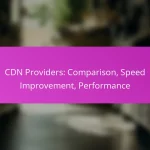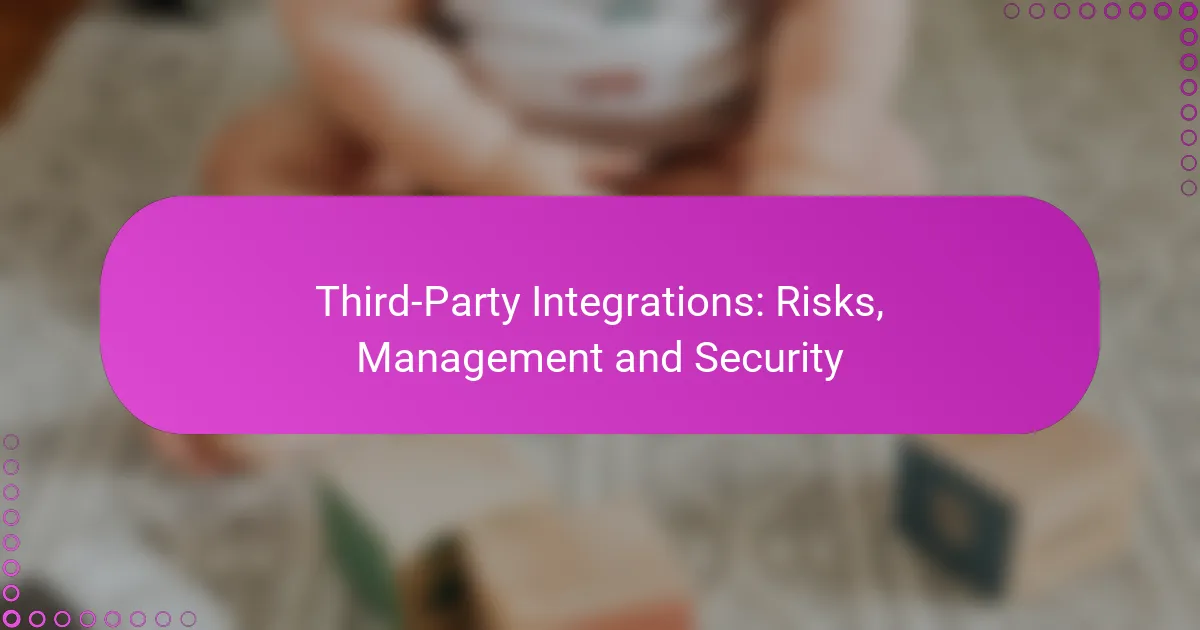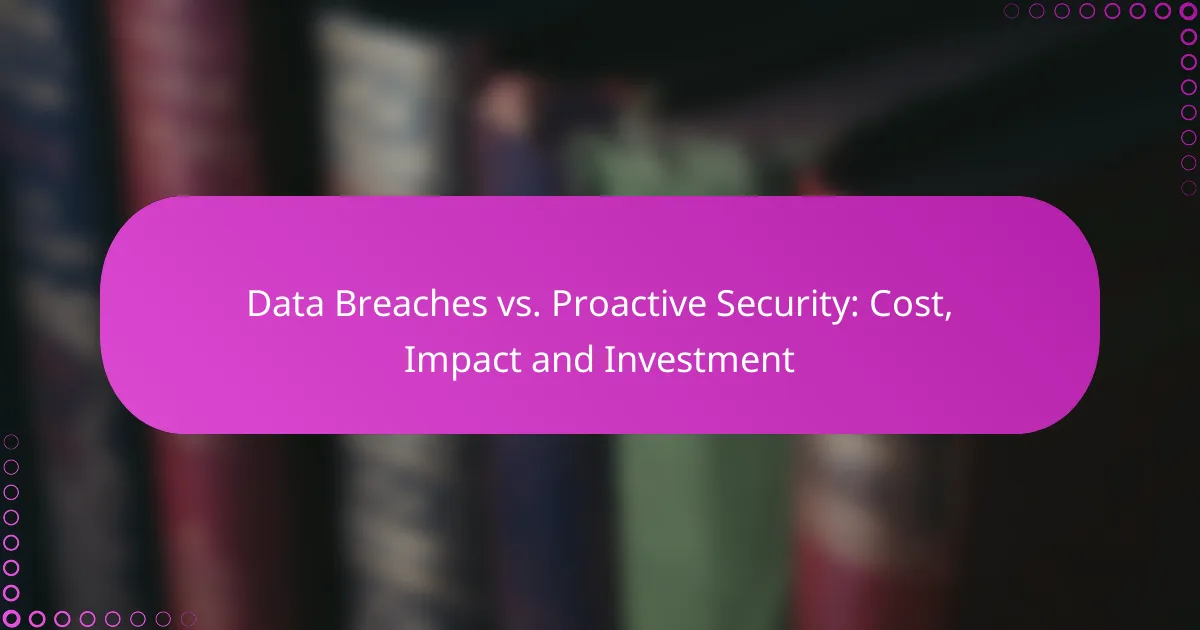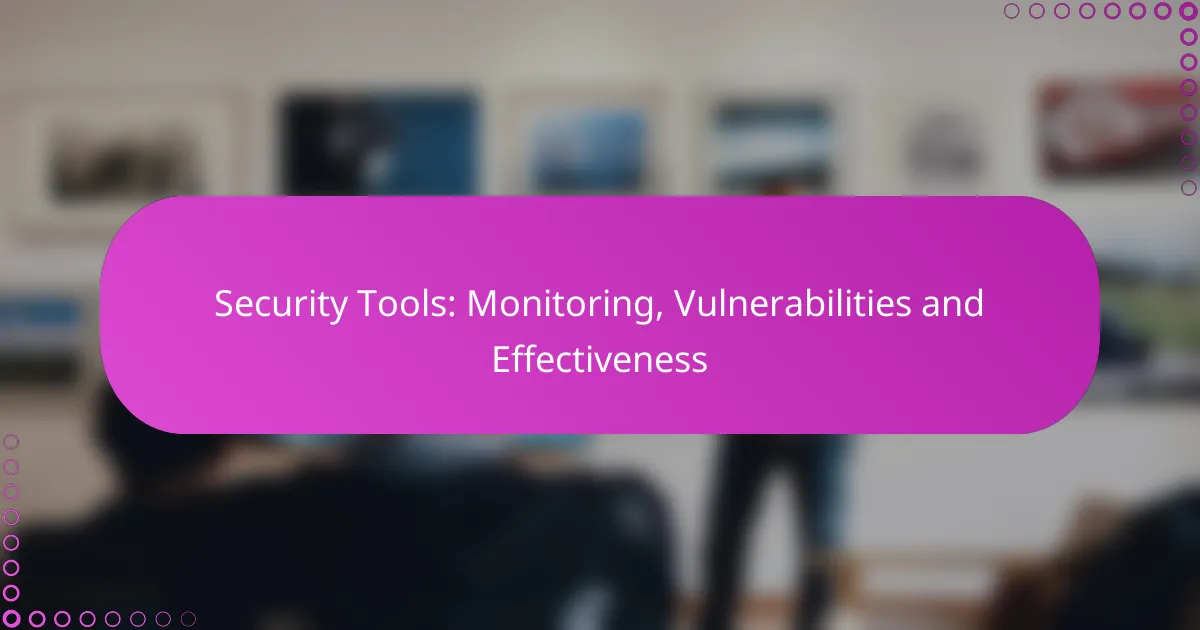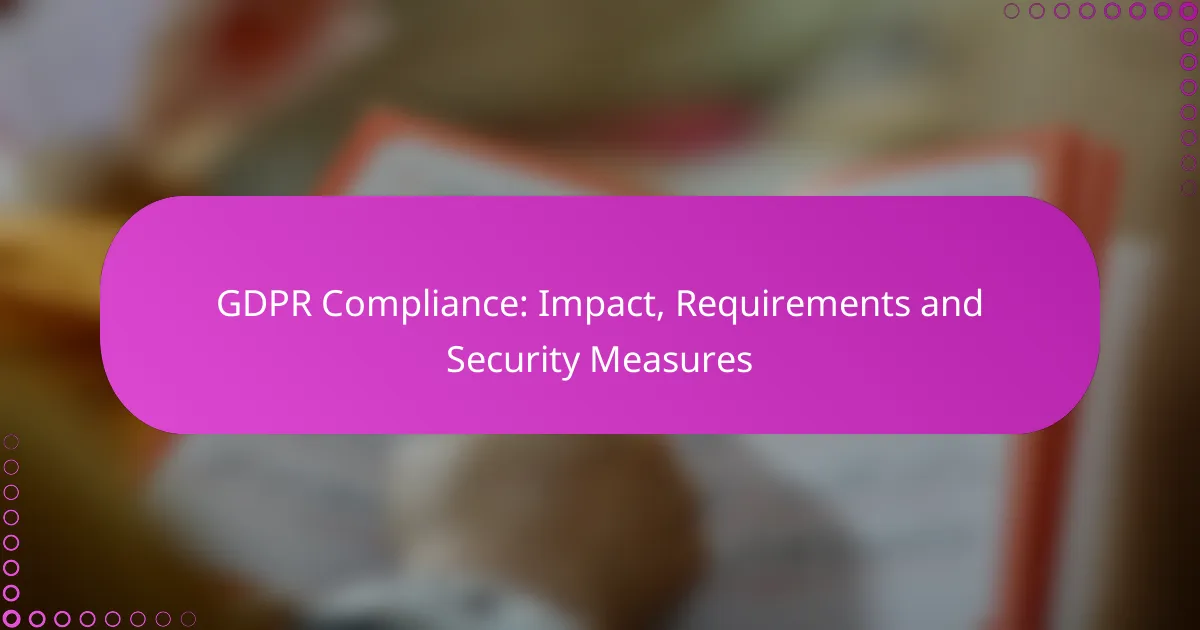Third-party integrations can pose significant risks such as data breaches, compliance violations, and system vulnerabilities, making it essential for organizations to understand and manage these challenges effectively. By implementing robust security measures, establishing clear vendor agreements, and utilizing monitoring tools, organizations can mitigate these risks and protect their operational integrity. Ensuring that sensitive information remains secure requires a proactive approach, including data encryption and access controls.

What are the risks of third-party integrations?
Third-party integrations can introduce various risks, including data breaches, compliance violations, system vulnerabilities, and vendor reliability issues. Understanding these risks is crucial for organizations to safeguard their data and maintain operational integrity.
Data breaches
Data breaches are a significant risk associated with third-party integrations, as they can expose sensitive information to unauthorized parties. When integrating with external services, organizations must ensure that these partners adhere to stringent security protocols to protect data.
To mitigate this risk, conduct thorough due diligence on third-party vendors, including their security practices and history of breaches. Regular audits and monitoring can help identify vulnerabilities before they lead to data loss.
Compliance violations
Compliance violations can occur when third-party integrations do not meet industry regulations or standards, such as GDPR or HIPAA. Organizations are often held accountable for the actions of their partners, making it essential to ensure that all integrations comply with relevant laws.
To avoid compliance issues, establish clear contractual obligations with third-party vendors regarding data handling and protection. Regularly review compliance status and implement necessary changes to maintain adherence to regulations.
System vulnerabilities
System vulnerabilities can arise from third-party integrations that introduce weaknesses into an organization’s infrastructure. These vulnerabilities can be exploited by cybercriminals, leading to potential system failures or data theft.
To address this risk, perform security assessments of third-party systems before integration. Implementing robust security measures, such as firewalls and intrusion detection systems, can help protect against potential threats.
Vendor reliability issues
Vendor reliability issues can impact business operations if a third-party service experiences downtime or fails to deliver as promised. This can disrupt workflows and lead to financial losses.
To manage vendor reliability, evaluate the track record of potential partners, including their uptime statistics and customer reviews. Establish clear service level agreements (SLAs) that outline expectations for performance and support, ensuring that there are contingency plans in place for service interruptions.

How to manage third-party integrations effectively?
Managing third-party integrations effectively involves implementing robust security measures, establishing clear vendor agreements, and utilizing monitoring tools. These strategies help mitigate risks and ensure that integrations align with organizational goals.
Regular security assessments
Conducting regular security assessments is crucial for identifying vulnerabilities in third-party integrations. These assessments should include penetration testing and vulnerability scanning to evaluate the security posture of the integrated systems.
Consider scheduling assessments quarterly or bi-annually, depending on the sensitivity of the data involved. Additionally, ensure that any findings are promptly addressed to minimize potential risks.
Clear vendor contracts
Clear vendor contracts are essential for defining the responsibilities and expectations of both parties in a third-party integration. Contracts should outline security requirements, data handling procedures, and compliance with relevant regulations.
Include clauses for regular audits and the right to terminate the agreement if security standards are not met. This ensures that vendors are held accountable for their security practices and that your organization is protected.
Integration monitoring tools
Utilizing integration monitoring tools enables organizations to track the performance and security of third-party integrations in real-time. These tools can alert you to unusual activities or potential breaches, allowing for swift action.
Look for tools that offer features such as automated reporting, anomaly detection, and compliance checks. Regularly reviewing these reports can help you stay ahead of potential issues and maintain a secure integration environment.

What security measures should be implemented?
To secure third-party integrations, organizations should implement robust security measures including data encryption, access controls, and incident response plans. These strategies help mitigate risks associated with data breaches and unauthorized access, ensuring that sensitive information remains protected.
Data encryption
Data encryption is essential for protecting sensitive information during transmission and storage. By converting data into a coded format, unauthorized users cannot access it without the appropriate decryption key. Organizations should use strong encryption standards, such as AES-256, to safeguard data both at rest and in transit.
Additionally, consider encrypting data before it leaves your network and ensuring that third-party services also comply with encryption standards. Regularly review and update encryption protocols to adapt to evolving security threats.
Access controls
Implementing strict access controls is crucial for limiting who can access sensitive data and systems. This includes defining user roles and permissions, ensuring that only authorized personnel can access specific information. Role-based access control (RBAC) is a common approach that helps enforce these restrictions.
Regularly audit access logs and permissions to identify any anomalies or unauthorized access attempts. Additionally, consider multi-factor authentication (MFA) to add an extra layer of security for users accessing critical systems.
Incident response plans
An effective incident response plan is vital for quickly addressing security breaches or data leaks. This plan should outline the steps to take when a security incident occurs, including identification, containment, eradication, and recovery. Having a clear strategy helps minimize damage and restore operations swiftly.
Regularly test and update the incident response plan to ensure it remains effective against new threats. Training employees on their roles during an incident can also enhance the organization’s overall readiness and response time.

How to choose the right third-party integrations?
Choosing the right third-party integrations involves evaluating vendor reputation, ensuring compatibility with existing systems, and reviewing security certifications. These factors help mitigate risks and enhance the overall effectiveness of the integration.
Evaluate vendor reputation
Assessing a vendor’s reputation is crucial for ensuring reliability and trustworthiness. Look for reviews, case studies, and testimonials from other businesses that have used their services. A vendor with a strong track record is more likely to provide consistent support and updates.
Consider checking industry-specific forums and social media platforms for feedback. A vendor with a solid reputation often has a history of positive interactions with clients and a transparent approach to problem resolution.
Assess compatibility with existing systems
Compatibility is essential for seamless integration. Before choosing a third-party solution, evaluate how well it aligns with your current systems and workflows. This includes checking software compatibility, data formats, and API availability.
Conduct a pilot test if possible, to identify any potential integration issues. This can save time and resources by ensuring that the new system works harmoniously with your existing infrastructure.
Review security certifications
Security certifications are vital indicators of a vendor’s commitment to data protection. Look for certifications such as ISO 27001, SOC 2, or GDPR compliance, which demonstrate adherence to recognized security standards.
Additionally, inquire about the vendor’s security practices, including data encryption, access controls, and incident response plans. A vendor that prioritizes security will help protect your data and reduce the risk of breaches.

What are the best practices for third-party integration management?
Effective third-party integration management involves establishing clear governance, conducting regular audits, and providing comprehensive staff training. These practices help mitigate risks associated with external partnerships and ensure secure and efficient operations.
Establish a governance framework
A governance framework sets the rules and guidelines for managing third-party integrations. It should define roles, responsibilities, and processes for evaluating and onboarding vendors, as well as ongoing management and oversight.
Key components include risk assessment protocols, compliance checks, and performance metrics. For example, organizations might use a scoring system to evaluate potential partners based on security standards and past performance.
Conduct regular audits
Regular audits are essential for maintaining oversight of third-party integrations. These audits should assess compliance with established policies, security measures, and performance benchmarks.
Consider conducting audits at least annually or semi-annually, depending on the complexity and risk level of the integrations. Utilize checklists that cover data protection, access controls, and incident response capabilities to streamline the process.
Provide staff training
Training staff on third-party integration management is crucial for minimizing risks. Employees should understand the security protocols, compliance requirements, and potential threats associated with third-party vendors.
Implement ongoing training sessions and workshops that cover best practices and emerging risks. Encourage a culture of security awareness, where staff feel empowered to report suspicious activities or concerns regarding third-party integrations.

What tools can assist in managing third-party integrations?
Several tools can effectively assist in managing third-party integrations by automating workflows and ensuring data security. These tools streamline processes, reduce manual errors, and enhance the overall efficiency of integration management.
Zapier
Zapier is a popular automation tool that connects various applications to automate workflows without needing extensive coding knowledge. It allows users to create “Zaps,” which are automated workflows that trigger actions in one app based on events in another.
When using Zapier, consider the types of integrations you need. It supports thousands of apps, making it versatile for many business needs. However, be mindful of the limitations on the number of tasks per month, which can vary based on your subscription plan.
To maximize your use of Zapier, start with simple automations before scaling up. Common pitfalls include overcomplicating Zaps or neglecting to monitor their performance regularly. Regularly review and optimize your workflows to ensure they remain efficient and effective.

